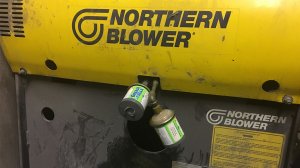SPONSORED POST (Virtual Showroom) Separation of the rolling elements of a ball bearing or roller bearing depends on hydrodynamic lubrication, which is the maintenance of a continuous presence of a very thin (micron-sized) elastohydrodynamic film of lubricant between rolling elements and raceways to ensure correct lubrication.
Under high magnification, even the smoothest surface will appear rough, but lubricants must still be able to maintain separation if the bearing is to achieve its full service-life. The coefficient of friction in a rolling element bearing in hydrodynamic lubrication conditions is in the range of 0.001 μ to 0.01 μ. If this is not achieved and maintained, then mixed friction results. If there is insufficient lubricant or if the lubricant has lost its lubricating properties, an oil film with sufficient load-carrying capacity cannot form. The result is partial lubrication with metal-to-metal contact, or mixed friction, between the rolling elements and raceways, leading to adhesive wear. Mixed friction occurs in the range of 0.01 μ to 0.2 μ. In the worst case, where the separating film beaks down completely, boundary friction exists, in the range of 0.1 μ to 0.25 μ.
Maintenance of a separating oil film is critical to reduce friction and wear. In approximate terms, the hydrodynamic friction coefficient in a rolling element bearing is 10 to 20 times less than the mixed friction coefficient, and 25 to 100 times less than the boundary friction coefficient. Maintenance of the separating oil film is dependent on selecting the correct lubricant with the necessary properties for the application, and correct lubricant application to ensure the necessary replenishment of lubricant at the right rate to maintain the film separating the bearing elements.
Discoloured (blue or brown) raceways and rolling elements are a sign of lubrication failure, leading to increased wear rates, which in turn causes excessive heat and can lead to catastrophic failure. Adhesive wear occurs because of lubrication failure, under mixed-friction or boundary-friction conditions.
Microscopic projections on the sliding interfaces between components weld together on contact and are then torn apart by the sliding forces, resulting in minute cavities on one surface and a build-up on the other. This damage has a compounding effect, and once it starts, the lubrication problems increase as a result of problems created by the surface damage, which then leads to an increase in the rate of surface damage. Adhesive wear includes scoring, galling, seizing and scuffing.
Skid smearing occurs when rolling elements slide rather than rotate, as they pass from the unloaded zone to the loaded zone, especially in large bearings – a situation worsened by old grease or grease that is too stiff. Smearing can occur on the roller surfaces and in the raceways of spherical roller bearings, with roller rotation being retarded in the unloaded zone. Lower rotational speed then results in sliding and smearing, as the rolling elements are accelerated in the loaded zone.
Correct lubrication depends on a number of factors, including:
- The right amount of lubricant – rolling element bearings in most applications operate at their optimum temperature when the minimum amount of lubricant is used. The quantity of lubricant required also depends on the functions performed, such as slow moving and/or heavily-loaded bearings, corrosion protection, sealing and purging (however, if this is a requirement, seals should ideally be lubricated separately to the bearing).
- The right lubricant – consideration needs to be given to bearing type, speed, load, vibration, temperature and conditions.
- Clean lubricant.
GreaseMax lubricants offer clean, continuous lubrication that is tailored to specific applications.
For more information, visit Creamer Media’s Virtual Showroom
EMAIL THIS ARTICLE SAVE THIS ARTICLE
To subscribe email subscriptions@creamermedia.co.za or click here
To advertise email advertising@creamermedia.co.za or click here













